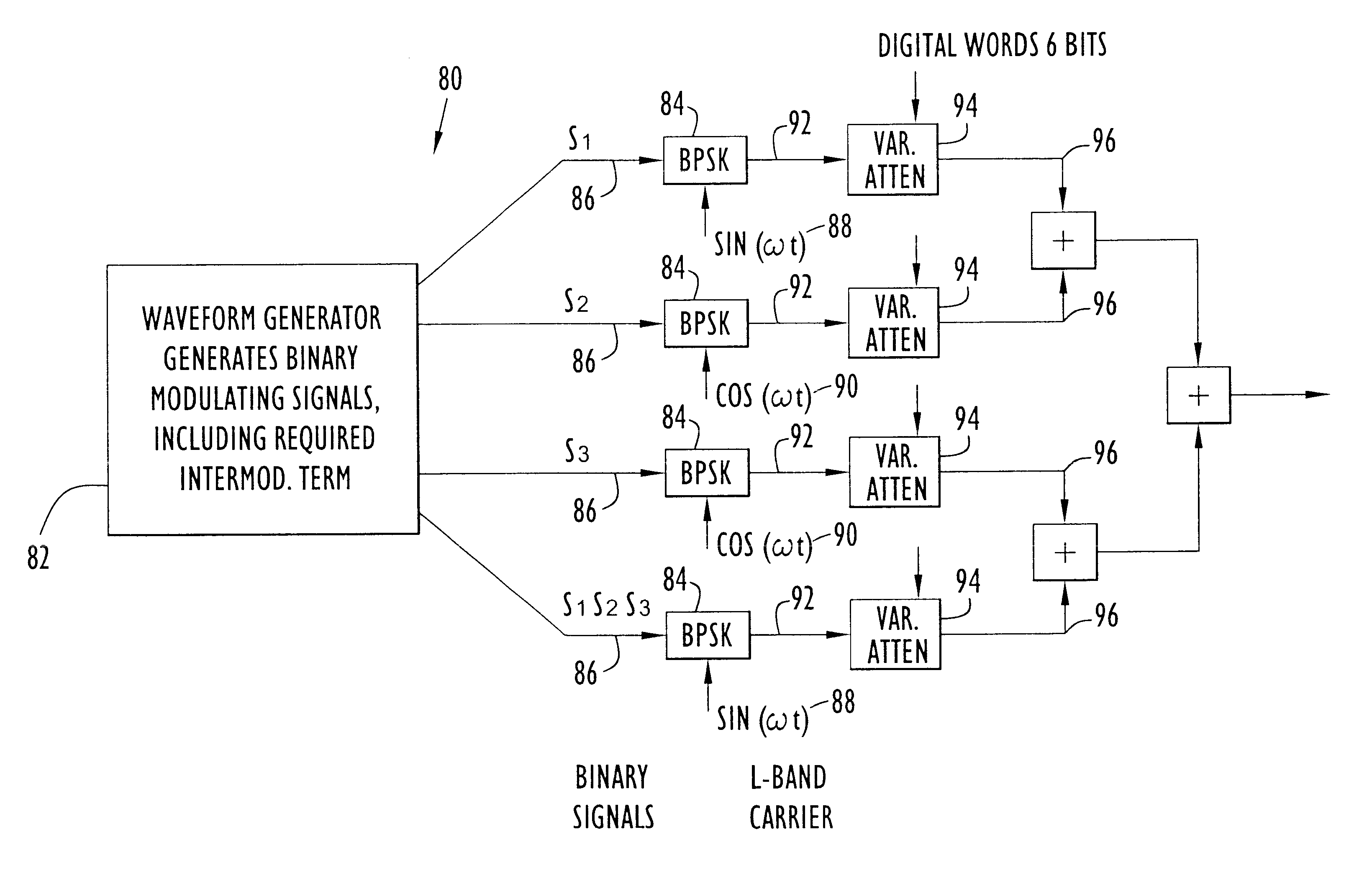Programmable waveform generator for a global positioning system
a global positioning system and generator technology, applied in the field of global positioning system programmable generators, can solve the problems of inconvenient approach for broadcasting g.p.s. navigation signals from space, inability to provide space-qualified components that are fast, and inability to achieve intermediate frequency too low,
- Summary
- Abstract
- Description
- Claims
- Application Information
AI Technical Summary
Problems solved by technology
Method used
Image
Examples
Embodiment Construction
The present invention utilizes a unique architecture wherein modulating signals are generated using a waveform generator and are then used to directly modulate an L-Band Rf carrier. This approach eliminates all of the limitations of these previous approaches. The modulating signal has a much lower frequency content than the modulated If signal, and the processing required to generate the modulating signal is well within the capabilities of space-qualified processors readily available today. In this new architecture, the modulating signals from the waveform generator are clocked binary signals that are sent directly to the modulators, thereby eliminating the D / A converter and any associated jitter and phase noise. Further, because there is no upconversion of the modulated signal required, there is no amplitude variation introduced by bandpass filters.
The operation of this invention depends upon the interplex modulation technique, which has been documented, for example in Ananda, M., ...
PUM
 Login to View More
Login to View More Abstract
Description
Claims
Application Information
 Login to View More
Login to View More - R&D
- Intellectual Property
- Life Sciences
- Materials
- Tech Scout
- Unparalleled Data Quality
- Higher Quality Content
- 60% Fewer Hallucinations
Browse by: Latest US Patents, China's latest patents, Technical Efficacy Thesaurus, Application Domain, Technology Topic, Popular Technical Reports.
© 2025 PatSnap. All rights reserved.Legal|Privacy policy|Modern Slavery Act Transparency Statement|Sitemap|About US| Contact US: help@patsnap.com



